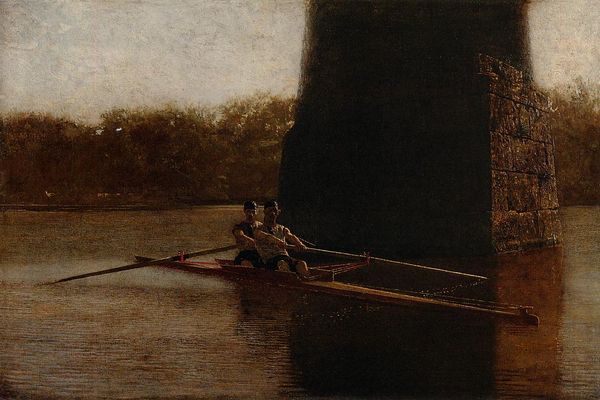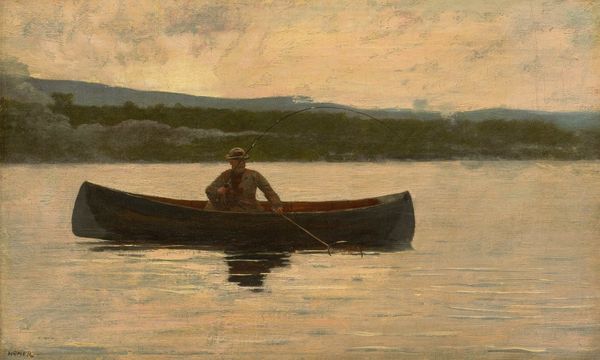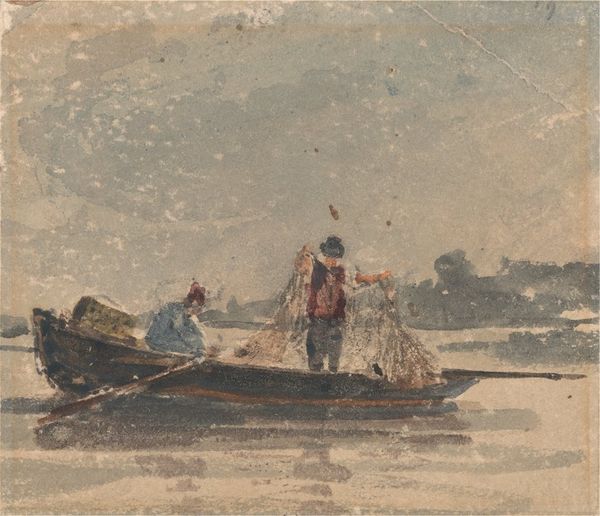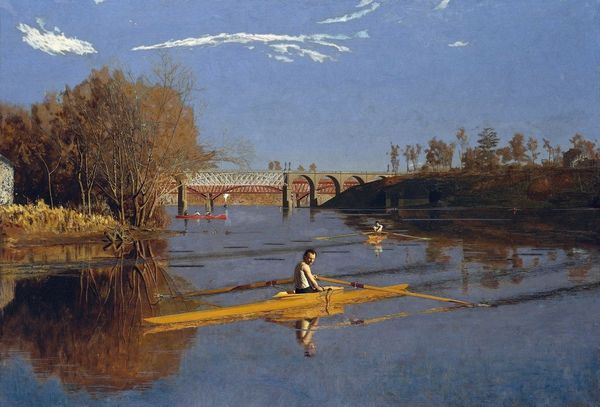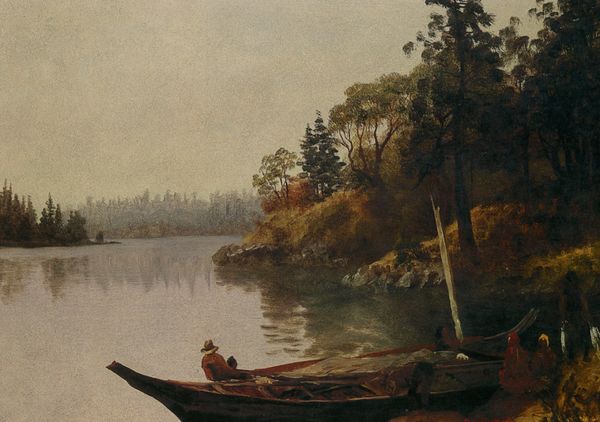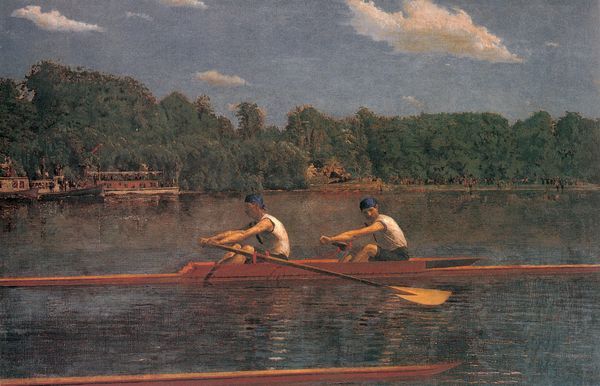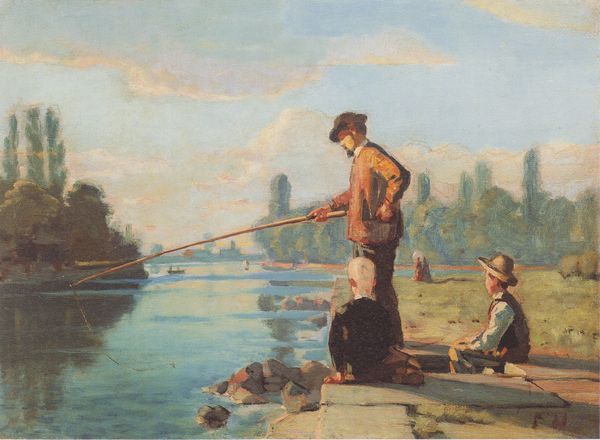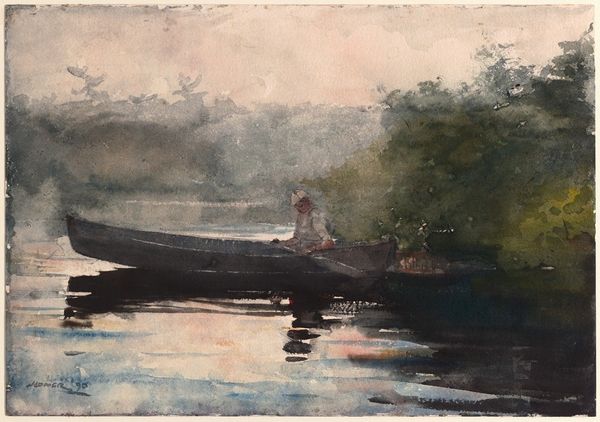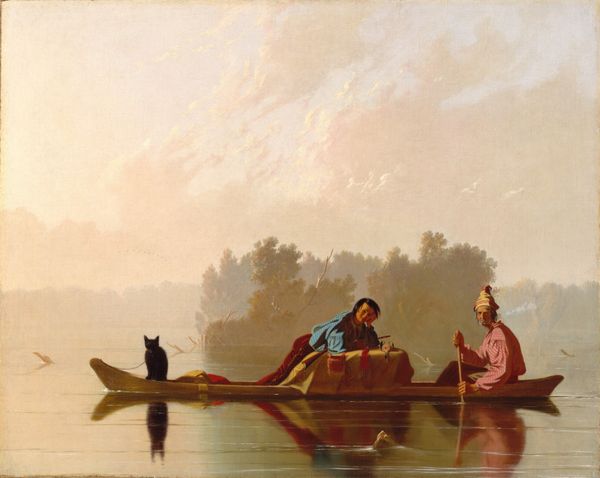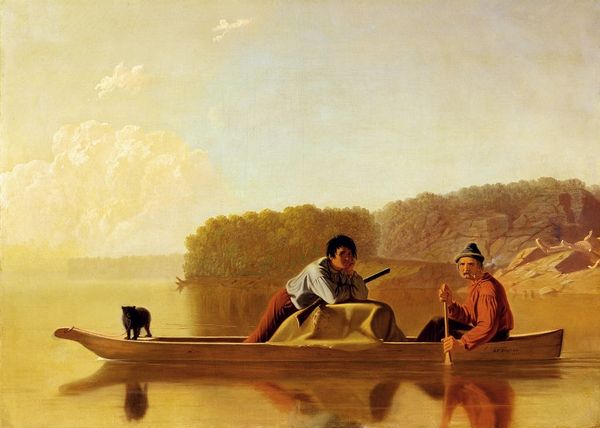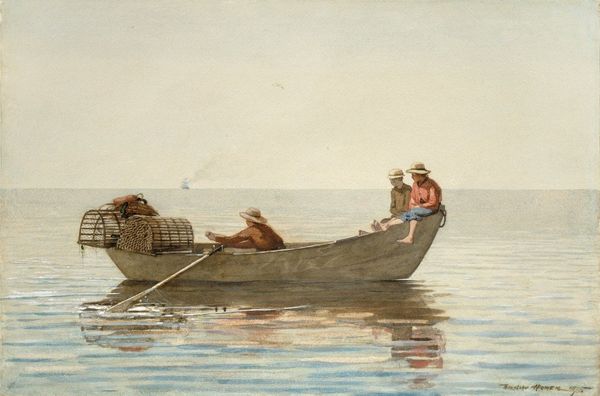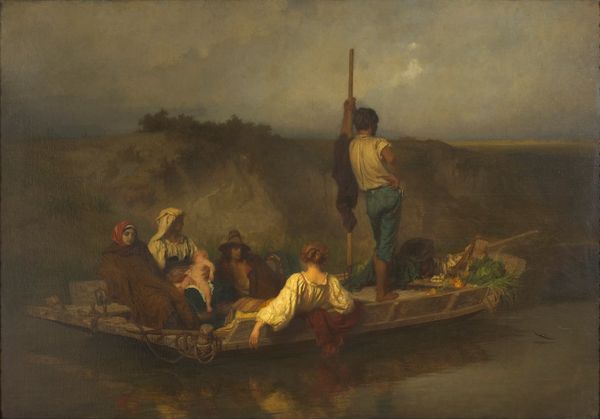
painting, oil-paint, impasto
#
painting
#
oil-paint
#
landscape
#
charcoal drawing
#
oil painting
#
impasto
#
genre-painting
#
realism
Copyright: Public Domain: Artvee
Editor: Here we have Thomas Eakins’ "The Oarsmen," painted in 1874. It’s an oil painting, depicting two men in a scull, powerfully cutting through the water. I’m struck by the contrast between the bright boat and figures and the shadowed bulk of what appears to be a bridge pier. What do you see in this piece, looking at it from your perspective? Curator: Eakins’ "Oarsmen" captures a pivotal moment in American cultural history. Consider the rise of leisure activities among the upper-middle class in the late 19th century. Rowing, specifically, became fashionable, signifying health, athleticism, and a certain social status. Think about the social context, these weren’t just everyday laborers on the water, they were participating in a very deliberate social performance. Notice the shadow. Why do you think Eakins uses the heavy, dark shadows? Editor: I see that now! It does elevate a mundane activity. The darkness surrounding them seems almost to emphasize their isolation, as if they're performing for… well, us. Is the darkness meant to make the leisure class seem secluded? Curator: Precisely! The deliberate contrast draws our eye directly to them. How does that visual strategy contribute to a sense of exclusivity, especially given the burgeoning industrial landscape outside the frame, so to speak? Eakins often challenged the established artistic conventions. What sort of tensions do you feel when viewing this piece with these new ideas in mind? Editor: I never thought about it that way, about the socio-economic performance in visual culture. I see tension because it isn’t a glorious, overtly romantic painting. Instead, there is that hint of darkness. It is as though he were presenting the rowers for critical inspection, or as a study. This reminds me that realism may not have always been a purely objective rendering. Thanks. Curator: Indeed! And remember that context deeply influences the art we view, it isn't solely an object of aesthetic beauty. Instead it captures moments and sentiments for us to study. Thinking about social history opens layers of insight and makes for much deeper readings of images like this one.
Comments
No comments
Be the first to comment and join the conversation on the ultimate creative platform.
